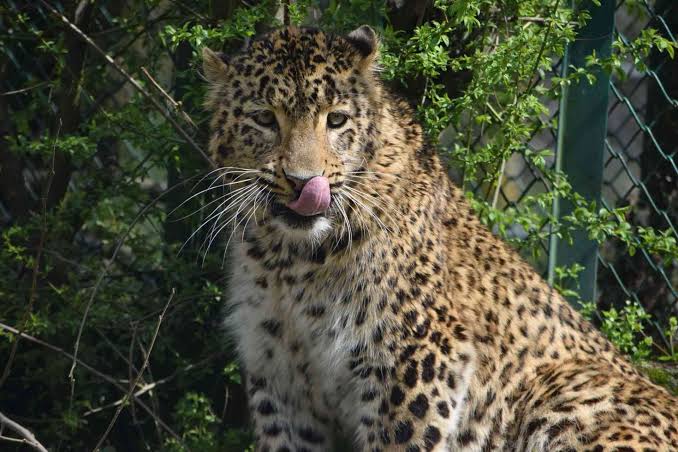Umaisar Gull Ganie
Srinagar, Apr 24: Unplanned urbanisation, rising dog population and the surge in the local intrusion into the wildlife habitat has forced the wild animals especially leopards and bears to enter into residential areas of Kashmir. The frequent entry of wild animals in the residential areas of the valley has resulted in the increase in the human-animal conflict besides leaving huge challenges for the wildlife department to deal with.
Figures accessed by new agency—Kashmir News Observer (KNO), reveal that from 2006 to March 2024, 264 individuals have fallen prey to the man-animal conflicts, with hundreds getting injured. “The toll is staggering. As 14 deaths and 65 injuries were recorded in 2022-23, 16 deaths and 182 injuries were reported from 2023 to March 2024 alone,” he said.
Experts believe that the encroachment of wildlife habitats by humans has led to an increase in such incidents.
Rao Farman Ali, a renowned author and researcher, told KNO that the areas once exclusively inhabited by wild animals are now being encroached upon by human populations, resulting in attacks on humans. “The unplanned urbanization and governmental negligence in implementing proper procedures to protect wildlife and forests are contributing factors,” he said.
He said that deforestation over the decades has significantly impacted wildlife, whereas in ancient times, people used to coexist with animals with fewer incidents.
“There is a need to protect forests and catchment areas should be made free from human interference. There is an importance of raising awareness among the public to avoid encroaching on wildlife zones and ensuring that animals have their own habitats,” Ali said.
Intisar Suhail, a senior wildlife expert and wildlife warden in Baramulla district told KNO that they have covered almost all the areas where they received reports of leopard attacks or livestock damage. However, there are still several areas close to forests where leopards attack and then retreat back into the forests.
He said to address the issue, the department has installed cages in two or three areas, and “we are hopeful to gain control over the situation as soon as possible.”
Suhail also expressed concern for the people living near the forests, emphasizing that they are vulnerable and lack protection. “Most of the attacks take place in the dark,” he said.
The officer said that they haven’t ensured proper security measures for the livestock, which might be why leopards are easily able to attack them.
He said the department has conducted awareness programs in many areas to educate people about the importance of self-protection and safeguarding their livestock.
Suhail said that they have received calls from various locations and their teams are actively working to address the issue and protect the livestock.
Regarding human habitats, he said that the department is prioritizing its safety. “We are facing challenges, particularly in villages located within the forests. Nonetheless, efforts are being made to ensure the safety of everyone,” he said.
The Divisional Commissioner, Vijay Kumar Bidhuri, has called for a well-coordinated strategy to tackle attacks by wild animals, particularly leopards and bears, across the valley. He emphasized the need for a centralized helpline to receive timely information for a swift response. Bidhuri has directed the Wildlife Department to strengthen the capacity of its staff, enhance logistics and operate Control Rooms at the district level.
The Divisional Commissioner also urged police personnel to assist wildlife teams when needed, ensuring crowd management and the safety of civilians. He emphasized the importance of coordination between district administrations, police, wildlife department, community leaders, lumberdars, chowkidars, and shepherds in capturing wild animals and processing factual information.
To prevent leopards from venturing into habitations, Bidhuri advised people to keep areas clean and dispose of waste properly, preventing stray dogs from being attracted to residential areas. He also urged residents not to leave their children unattended during dawn and dusk and advised them to move in groups in confirmed wild animal sitting areas
Talking to KNO exclusively, Regional Wildlife warden Pradeep Chandra Wahule said that Leopards are protected animals and need to be preserved. “But things change when they attack humans. We have to tranquilise them or kill them as per the requirement,” he said. “It is the humans who are forcing the leopards to change their behaviour. Leopards love to eat dogs. When we leave food, especially waste food scattered around our homes, that invites dogs. When the dog population increases, Leopards change their behaviour and enter into residential areas as they love to taste dogs.”
He said: “If we deal with the garbage disposal properly, there will be no easy access of food to wild animals. So we need to dispose of the food waste properly to prevent the entry of leopards into residential areas.”
As far as the bears, he said that they love to eat fruit from the nearby orchards. “When there is population explosion as we see residential houses near the orchards, after eating the fruit, bears enter the residential areas,” he said. Chandra said that there are a lot of steps that the department has taken to prevent the entry of wild animals into residential areas. “There is a need for collective effort,” he said—(KNO)




